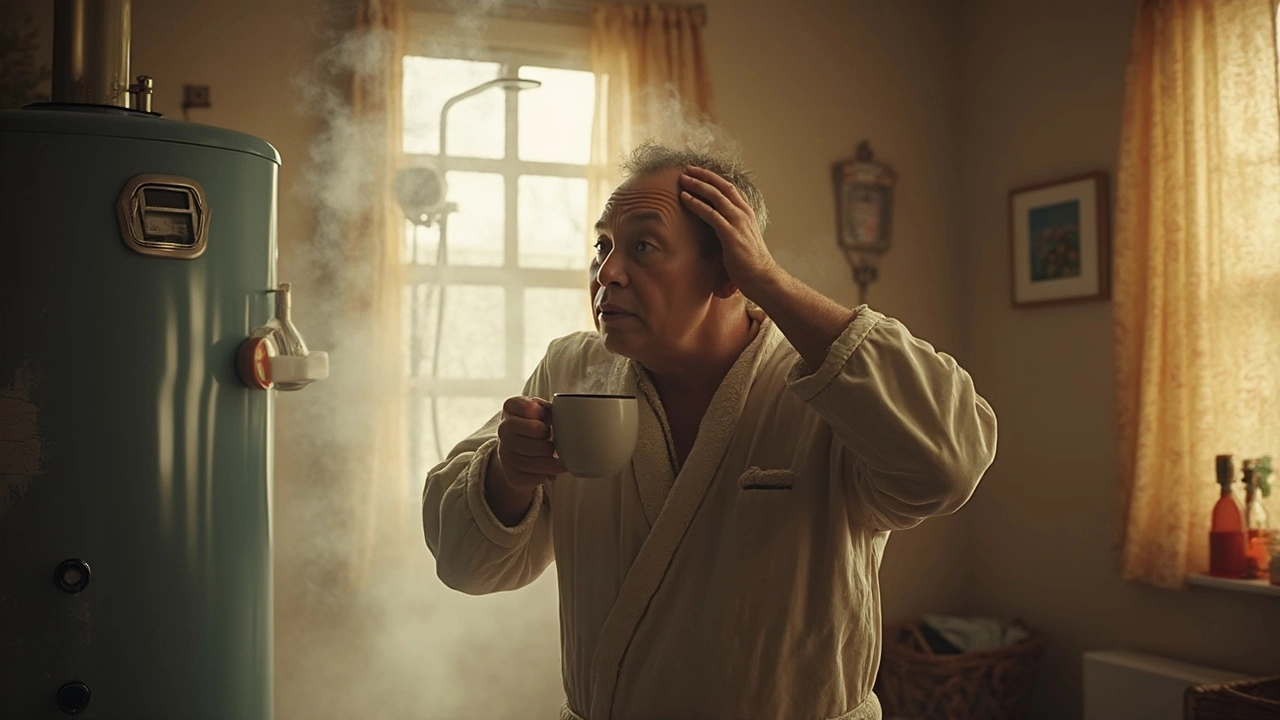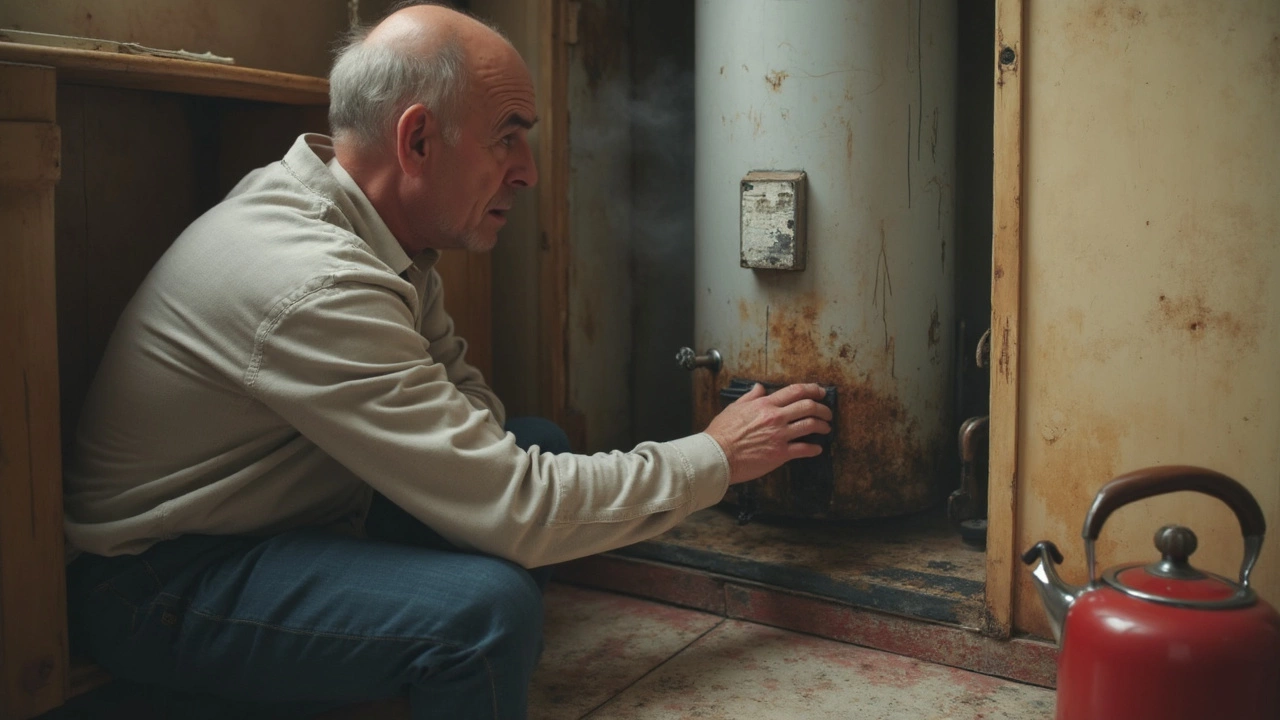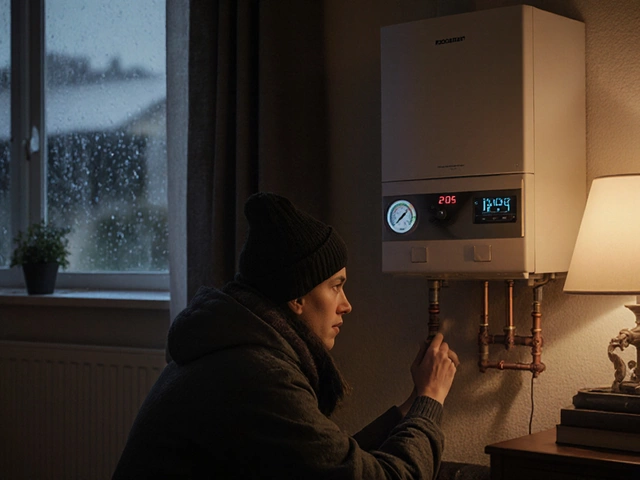If you’re stepping into a cold shower first thing in the morning, that’s a rough wake-up call no one wants. Most people blame the whole water heater for problems, but honestly, the thermostat could be the sneaky culprit. Knowing how to pinpoint a bad thermostat not only saves time, but can also spare your wallet from an unnecessary full replacement.
Spotting a bad thermostat doesn’t require a toolbox full of fancy gadgets or a degree in electrical engineering. When the water’s suddenly not heating right or it’s coming out scalding hot, the thermostat is high on the suspect list. It’s not just about cold water—erratic temps, heaters that won’t shut off, or ones that seem to run nonstop all point to a possible thermostat issue.
- Warning Signs Your Thermostat Is Failing
- Quick DIY Checks You Can Do
- Common Mistakes and Misdiagnoses
- Step-by-Step Guide to Testing the Thermostat
- When to Call a Professional
Warning Signs Your Thermostat Is Failing
A busted thermostat can really mess with your daily routine. The tough part is these things rarely scream for attention—they just make your life harder in small, annoying ways. So, which red flags should you look out for before your water heater fizzles out?
- Hot water heater is only making lukewarm water—never really hot, even when you crank it up.
- Water suddenly comes out scalding hot, then goes cold for a while. The temp is all over the place.
- No hot water at all—the tank’s full but feels cold every time you check.
- The water heater keeps running nonstop; sounds like it's working overtime even though nobody’s using hot water.
- Water heater trips the breaker (especially in electric units). This can mean the thermostat is stuck "on" and overheating things.
If you’re seeing more than one of these symptoms, there’s a good chance your thermostat is acting up. Most electric heaters have two thermostats—one for the upper half, one for the lower. Sometimes only one goes bad, so you might get short bursts of hot water, then nothing.
Here’s a quick look at the most common warning signs and how often they show up, according to a recent 2023 survey of home repair calls:
| Sign | % of Heater Repairs Citing Issue |
|---|---|
| Inconsistent water temperature | 44% |
| Loss of all hot water | 27% |
| Water too hot | 18% |
| Breaker trips | 7% |
| Unit running constantly | 4% |
If your shower is unpredictable or you’re messing with the dial nonstop, don’t ignore it. Most folks ignore these signs until the heater quits entirely. Paying attention early makes repairs simpler and way less expensive.
Quick DIY Checks You Can Do
If you’re unsure whether your water heater problems are thanks to a bad thermostat, there are a few simple things you can check before you call anyone. No tools? Just grab a screwdriver and flashlight. Unplug electric heaters or shut off gas before poking around for safety.
- Check the temperature setting. Sometimes the dial gets bumped by accident. For most homes, the sweet spot is 120°F (49°C).
- Feel the water—literally. If it’s ice cold or boiling, chances are the thermostat isn’t doing its job.
- Look for the RESET button. If your heater has one, press it. If the heater works after you do this, your thermostat is likely acting up or overheating.
- Listen to your heater. Is it clicking a lot, or just running non-stop? Those sounds usually point right at a thermostat issue.
Check out how common symptoms stack up for easy troubleshooting:
| Symptom | Probable Cause | DIY Action |
|---|---|---|
| No hot water | Upper thermostat failure | Check for tripped breaker/reset button |
| Not enough hot water | Lower thermostat failure | Test with thermometer at faucets |
| Water too hot | Thermostat set too high or stuck | Adjust temperature dial |
| Heater stays on | Stuck relay/thermostat | Listen for nonstop operation |
If anything looks suspicious, write it down. This helps when you check with a pro or grab parts at the store. You don’t need to be an expert to spot when your hot water heater thermostat is headed south—you just have to pay attention to the clues.
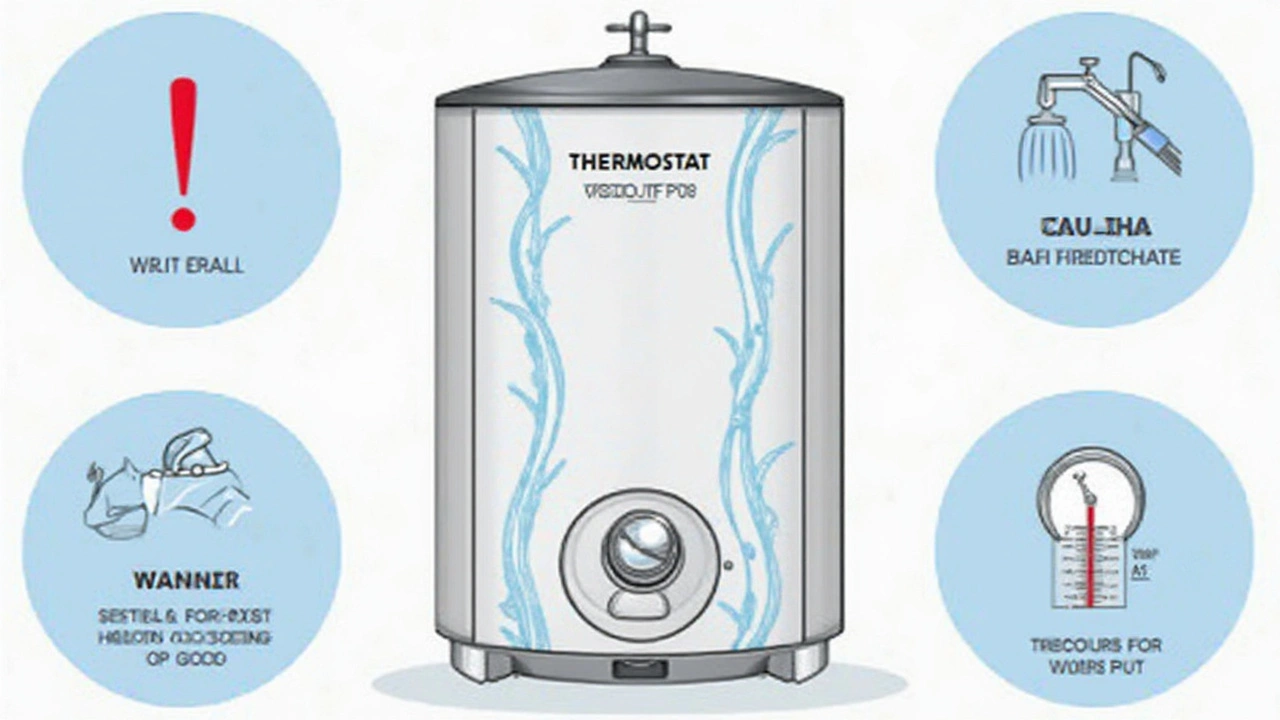
Common Mistakes and Misdiagnoses
It’s pretty easy to blame the thermostat when something goes wrong, but not every hot water hiccup is about a busted thermostat. Plenty of folks replace parts that were never the problem to begin with, which can waste money and time.
One common mistake is ignoring the power source. Sometimes the circuit breaker gets tripped or the water heater just isn’t plugged in tight—especially after a storm or if someone’s been moving stuff around. If you skip this basic check, you’re chasing your tail for nothing.
Another area where things get mixed up: the heating elements. These can burn out or collect loads of mineral buildup, making the water temperature drop or get unpredictable. It’s easy to swap the thermostat thinking it’s the cause, but if the element is toast, you’ll have the same problem after replacing the thermostat.
Here’s a quick hit list of mix-ups to watch for:
- Replacing the thermostat without checking the hot water heater's heating elements
- Missing obvious signs like a tripped breaker or blown fuse
- Overlooking sediment buildup in the tank, which messes with temperature control
- Assuming leaks are because of thermostat failure, when it’s really a busted valve or gasket
- Not resetting the high-limit switch (a built-in safety feature that can shut things down if water gets too hot)
Always check cheap and simple fixes first. There’s no need to drop $60 on a new thermostat if flipping a breaker or flushing the tank solves everything. If you’re unsure, a multimeter can help you check if power is actually reaching the thermostat or if the heating elements are still alive. Don’t guess—test.
Step-by-Step Guide to Testing the Thermostat
Let’s roll up those sleeves—testing your water heater’s thermostat isn’t as scary as it sounds. You can do it yourself, and you really don’t need special skills. Just make sure you keep safety front and center. If you feel unsure, don’t risk it—call a pro.
Here’s how you can check if your water heater thermostat has gone bad:
- Turn off the power. Head to your breaker box and shut off the electricity to your water heater to avoid shocks. Double-check with a non-contact voltage tester—trust me, getting zapped ruins your day.
- Remove the access panel. Find the metal cover on the side of your heater. Once it’s off, peel back the insulation. You’ll see the thermostat—usually above or below the heating elements, depending on your model.
- Set your multimeter to RX1 (resistance/ohms). If you don’t have a digital multimeter, they’re cheap and super handy to own.
- Test for continuity. Place one probe on the common terminal (usually marked) and the other on the heating element terminal. If your reading is close to zero, the circuit’s good. If it’s showing infinity or ‘OL,’ there’s a break—it’s time for a new thermostat.
- Test the reset button. Many thermostats have a little red reset button (high-limit reset). Press it gently—if it clicks and the heater starts working, cool—problem solved. If it won’t reset, it’s likely shot.
- Reassemble everything. Once you’ve checked things over, put the insulation and cover back on, and turn the power back on at the breaker.
Here’s a super common question: Do both thermostats (upper and lower) go bad at once? Rarely. Usually, it’s just one, so always test both if you have a double-element heater.
| Test Result | What It Means |
|---|---|
| Reading shows 0 (continuity) | Thermostat circuit is OK |
| Reading shows infinity or OL | Broken circuit, thermostat is bad |
| Reset button pops out repeatedly | High-limit switch is failing |
The hot water heater thermostat isn’t something you have to replace often; most last 7-10 years if you keep your tank in good shape. But when they do go out, following these steps helps you know for sure if that’s what’s giving you chilly showers or boiling hot water. Just remember: electricity and water don’t mix, so if anything feels risky, don’t hesitate to call a pro.
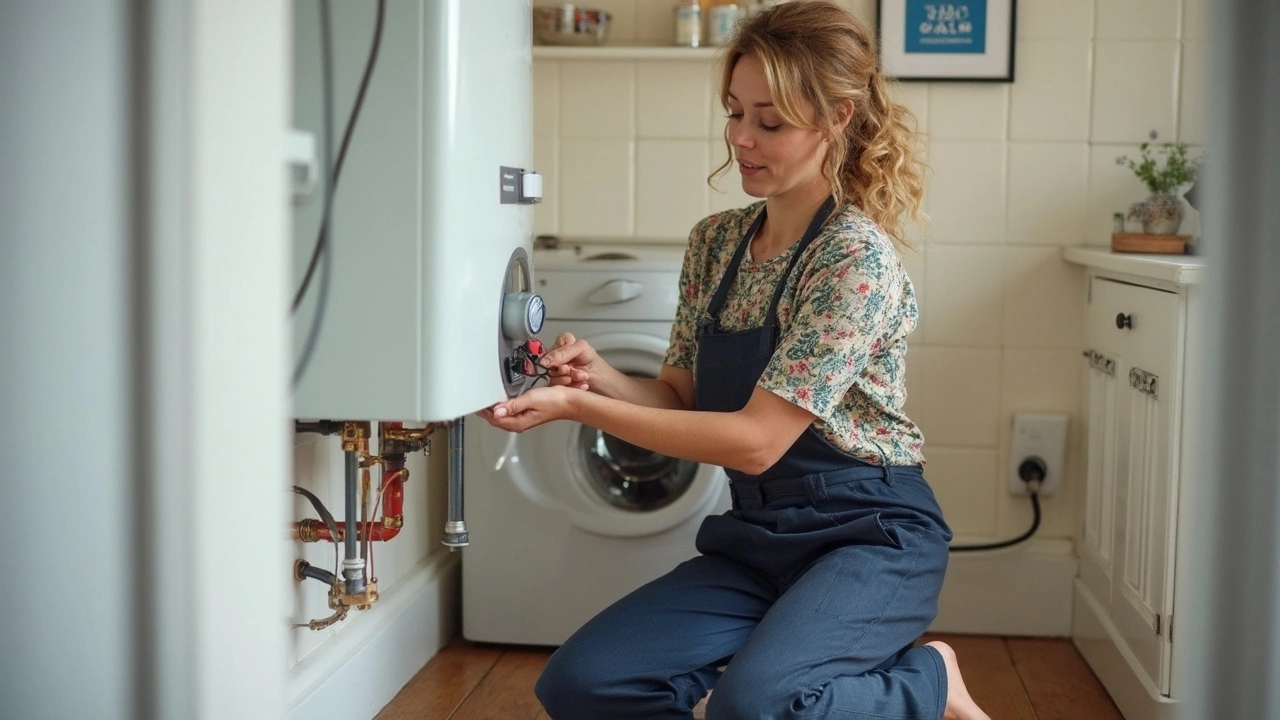
When to Call a Professional
You’ve done the basic checks and something still seems off with your hot water heater? There are times when DIY just won’t cut it. If you notice weird noises like popping or banging, water leaking out where it shouldn’t, or if the breaker keeps tripping when you try to use hot water, that’s a sign the problem goes beyond just the thermostat.
Don’t mess with anything electric if you spot burnt wires, a blown fuse, corrosion, or melted insulation. The risk of electrical shock is real, even if the heater is turned off. Also—smelling gas or seeing water pooling around the base aren’t things to shrug off. Those are signs that scream for a pro.
Licensed plumbers and technicians have the gear to test volts, amps, and continuity safely and accurately. According to the U.S. Department of Energy, electrical problems are involved in about 8,000 home fires each year—and faulty water heater repairs definitely play a part in that. Instead of risking it, call in someone with the right tools and training.
- Water stays cold even after replacing the thermostat
- You find scorch marks or obvious electrical damage inside the heater
- The reset button trips immediately after being pressed
- Strange smells (like burning plastic or gas)
If any of these sound familiar, don’t keep troubleshooting—this is exactly when it’s time to reach for a pro. Most importantly, remember your hot water heater is designed to work safely when everything’s in good shape. Skipping expert help when you need it can risk your home, your family, and even your furry friends. Trust me, I wouldn't want Rex getting into a mess with a busted heater.
| Issue | DIY Fix Possible? | Pro Needed? |
|---|---|---|
| No hot water after thermostat replacement | No | Yes |
| Visible electrical burns | No | Yes |
| Heater leaking water | Maybe (minor leak only) | Yes |
| Heater keeps tripping the breaker | No | Yes |
